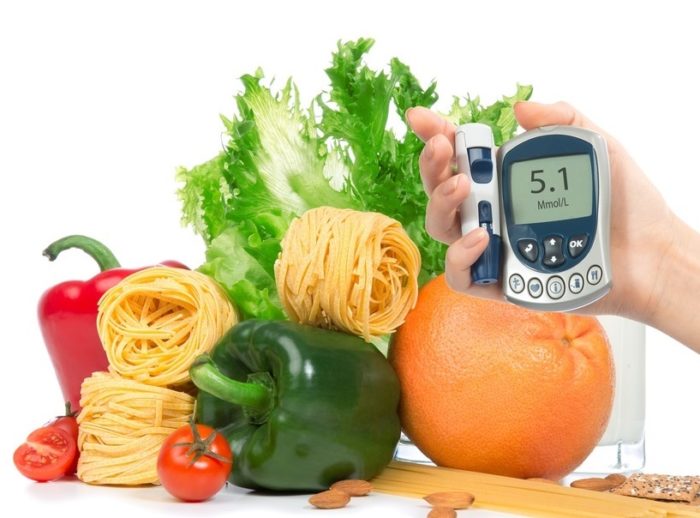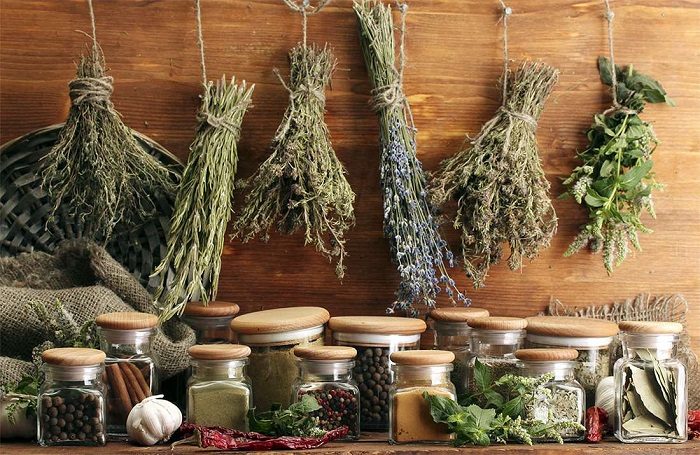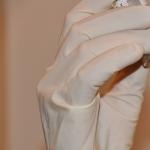When the endocrine system works well and there are no deviations in humoral regulation, the blood sugar level is stable. Small short-term deviations in the direction of decrease or increase from the established norm do not have a negative value. Pathology is considered to be constantly high levels of glucose in the blood and, especially, the presence of sugar in the urine. Without adequate actions aimed at how to normalize blood sugar, such a painful condition is fraught with the development of diabetes mellitus and the irreversible consequences associated with this serious disease.
Elevated sugar: direct and indirect manifestations of diabetes
The main symptoms of high blood sugar are:
- frequent urination;
- unquenchable thirst;
- insatiable appetite.
The first thing that a doctor assumes, if a patient addresses him with such complaints, is the presence of diabetes mellitus - a disease in which the sugar content in the blood is significantly and constantly elevated. Diabetes always occurs in a chronic form and is classified into two main types - insulin-dependent and non-insulin dependent.
Regardless of the reasons why the sugar in the patient's body is elevated to critical levels, the initial, direct signs of type 1 and type 2 diabetes are always identical. However, they appear differently:
- - in type 1 diabetes, symptoms occur suddenly, simultaneously and reach a peak in intensity in a short period of time;
- - Diabetes mellitus type 2 of the initial stage is often asymptomatic or with mild symptoms.
In the future, the course of the disease acquires specific features. So, with non-insulin-dependent diabetes, indirect signs of the disease join the main symptoms:
- increased fatigue;
- frequent feeling of weakness;
- blurred vision;
- susceptibility to colds, viral diseases;
- causeless weight loss;
- the appearance on the skin of purulent phenomena, furunculosis, non-healing or slowly healing erosions, trophic ulcers.
What is the main danger of type 2 diabetes - the disease develops imperceptibly and progresses over several years. The disease is diagnosed more often by chance, according to the results of a laboratory blood test, or already at the stage of complications of diabetes.
Blood sugar levels are normal
Non-hazardous norms for the content of glucose in the blood have been established, which do not depend on gender. Normal fasting capillary blood sugar level (in mmol/l):
- in infants of the first month of life - 2.8-4.4;
- in children, adolescents, adults under 60 years old - 3.2-5.5;
- in the elderly (60-90 years old) - 4.6-6.4;
- in the elderly after 90 years - from 4.2 to 6.7.
After a meal, the glucose level may briefly rise to 7.8 mmol / l. This is not a deviation from the norm, but must be taken into account when calculating the results of a blood test for sugar.
Slightly elevated blood sugar in women is observed during pregnancy. During this period, indicators of 3.8-5.8 mmol / l glucose in capillary blood are considered normal. After giving birth, everything returns to normal.

Foods and drinks that lower blood sugar
The nutrition system with high sugar is being completely revised. Carbohydrate foods that increase sugar are excluded from the diet. The main focus is on foods with a low glycemic index (5-65), which help stabilize blood glucose levels.
The patient's menu must certainly contain:
- citrus fruits (lemons, oranges, grapefruits);
- fruits (avocados, cherries, sweet and sour apples);
- green vegetables (zucchini, squash, cabbage (any kind), cucumbers, asparagus beans, spinach, sorrel, celery);
- Jerusalem artichoke (contains inulin - a plant analogue of the hormone insulin);
- turnip;
- garlic;
- fresh greens;
- nuts (cashews, peanuts, walnuts and Brazil nuts, almonds, hazelnuts);
- pumpkin and sunflower seeds;
- spices (cinnamon, cloves, mustard, ginger, black and red hot peppers, turmeric, any dried herbs);
- seafood;
- fish;
- soy cheeses;
- legumes;
- cereals.
On a note. With regular use of nuts, the risk of developing diabetes is reduced by 30%. But given the high calorie content and slow absorption of this product, the daily intake of nuts should not exceed 50 grams.
Be sure to include forest and garden berries in the menu with high sugar. Cranberries, lingonberries, wild strawberries, victoria, white currants, gooseberries, etc. not only contribute to the stabilization of blood glucose, but are also a valuable supplier of vitamins that enhance the protective properties of the body.
Of the drinks that answer the question of how to effectively reduce blood sugar, one can single out chicory, green, linden, monastery tea. The benefit of these drinks lies in the ability to normalize carbohydrate metabolism, improve overall metabolism, and prevent an increase in the amount of glucose in the blood. Chicory, in addition, contains inulin, a plant analog of insulin, so it is especially useful in this condition.
Beans, cereals, cereals - this is what you need to eat with high sugar. Among legumes, soybeans, peas, beans, beans, lentils, chickpeas are recognized as the most useful. The leader in the fight against high sugar among cereals is oats. It is useful to eat jelly, decoctions, whole grain cereals, cereals, oat husks daily, in small portions.
diet to regulate sugar
- cooking technique - steaming, boiling, stewing;
- the chemical composition of food - 300-350 g of carbohydrates (45%); 80-90 g proteins (20%); 70-80 g fat (35%);
- daily salt intake - no more than 12 g;
- the volume of fluid consumed - up to 1.5 liters per day;
- the approximate calorie content of the menu for the day is 2200-2400 kcal;
- fractional meals, 5-6 times a day.
Attention! Fried, salted, pickled foods are prohibited in the medical diet No. 9.
If there is any doubt about whether a particular food raises blood sugar, it is better not to eat it without consulting a nutritionist. As for absolute prohibitions, the following are completely excluded from the diet of a low-carbohydrate diet:
- fatty meats, fish and poultry and any dishes from them;
- smoked meats, sausages, canned food;
- fish caviar;
- culinary and animal fats;
- dairy and sour-milk products with a high% fat content and dishes from them;
- any pickles, marinades, hot sauces;
- semolina, rice, pasta;
- baking, confectionery;
- any sweet drinks.
In order to avoid complications, a prerequisite for diet No. 9 is constant control over calories and the chemical composition of products.

Folk remedies and herbs that reduce blood sugar
Traditional medicine offers its own recipes for the fight against diabetes. Their advantage is not so much that they achieve a decrease in blood sugar with folk remedies quickly, but in availability, safety, naturalness and effectiveness, not inferior to purchased medications.
Home remedies made from common foods help regulate glucose levels. For example:
- Whole grain oats (1/2 cup) pour boiled water (0.6 l). Steam for 15 minutes. Infuse for half an hour, strain. Drink a month for half a glass before meals 3 times a day.
- crush in a mortar. Select a tablespoon, pour not cold kefir (200 ml). Insist night. Drink before breakfast in the morning.
- Grind flax seeds into powder. Pour a teaspoon with a glass (200 ml) of boiled water. Insist 40 minutes. Squeeze half a lemon into the broth. Stir, drink the infusion, without filtering, at a time.
- Mix the juice of one medium-sized lemon with a raw chicken egg. Drink on an empty stomach 3 days in a row, then take a break for 10 days. Repeat the course if you feel worse.
- String beans (4 tablespoons) pour 0.5 liters of boiling water. Warm up for a couple of 20 minutes. Leave for at least an hour, strain. Take before meals 3 times a day.
In the home treatment of diabetes, a variety of herbs are often used to reduce blood sugar. The first places in this list are occupied by:
- immortelle;
- St. John's wort;
- veronica;
- Bay leaf;
- leaves of black currant, wild strawberry, lingonberry, blackberry;
- woodlice;
- clover;
- dandelion;
- burdock root, highlander;
- sagebrush;
- stinging nettle;
- Birch buds;
- berries of elderberry, hawthorn, wild rose;
- fruit septa and young walnut foxes.
Decoctions are prepared from herbs, teas are brewed, water infusions are made. For example:
- Grind fresh clean dandelion roots. Select 1 tbsp. l., pour boiling water (2 tbsp.). Insist in a thermos for 2 hours, strain. Drink within one day for 3 times in 30 minutes. Before meals.
- Bay leaf (8-10 pieces) pour a glass of boiling water. Insist in a thermos for 24 hours. Drink half an hour before meals ¼ cup 3 times a day. The course of treatment is 3-6 days.
- Chopped burdock root (20 g) pour boiling water (200 ml). Warm up for 10 minutes for a couple, insist half an hour. Strain, chill. Take a tablespoon shortly before the main meals.
Important! Any folk remedies should not be used without first consulting a doctor.
Sweeteners and sweeteners: benefits and harms
Natural or artificial sweeteners are used instead of sugar in diabetes. However, sweeteners do not always bring only benefits, so their use requires a conscious choice and compliance with certain rules.
This applies not only to artificial, but also to natural sugar substitutes, which include fructose, sorbitol and xylitol. These substances are not allowed to be used uncontrolled and in unlimited doses in any case. People with a large body weight and obese natural sweeteners are generally forbidden to eat.
Fructose, although 3 times less than glucose, still increases blood sugar. You can not use this substance in diabetes at all. Xylitol and sorbitol do not increase sugar, but are high-calorie foods. In addition, if the dose is exceeded and taken for a long time, such sweeteners can disrupt the digestive tract, causing various disorders.
Artificial sweeteners are less harmful in this regard. Recommended for diabetes:
- saccharin;
- sucralose;
- sodium cyclamate;
- aspartame;
- steviazid;
- acesulfame potassium.
These foods are low in calories and do not affect blood sugar levels. But there are a number of contraindications, in the presence of which it is impossible to use certain artificial sweeteners.
So, pregnant women and children are not allowed to consume saccharin. Sodium cyclamate is not recommended for people with kidney failure. Persons suffering from heart failure should be cautious about the use of acesulfame potassium.
![]()
Physical activity with high blood sugar
As well as proper nutrition with high sugar, reasonable physical activity is necessary to normalize blood sugar. It is reasonable, since too intense exercise is one of the reasons why blood sugar rises even in a healthy person. It will be even more dangerous for a diabetic patient.
- swimming;
- water aerobics;
- regular walking, walking with variable acceleration and deceleration;
- slow jogging;
- rollerblading, cross-country skiing, cycling;
- exercises with weighting (dumbbells up to 2 kg) for 10 minutes a day;
- morning exercises with warm-up exercises for all muscle groups;
- breathing exercises;
- yoga.
All these exercises perfectly saturate the tissues with oxygen, thereby lowering the amount of glucose in the blood, and also stimulate the active burning of fats, helping to reduce body weight. At the same time, significant physical effort is not required to perform aerobic exercises.
Important. Physical activity should be systematic, regular, not too tiring.
Exercises are performed only after meals. The duration of classes is from 20 minutes to 1 hour a day, depending on the patient's well-being and the severity of diabetes.
It is not difficult to conclude that there are many affordable, effective ways and means of normalizing blood sugar. But not all of them are harmless and harmless. Therefore, before taking any independent measures, you need to find out the cause of the ailment by contacting a doctor and passing the examination prescribed by him.


